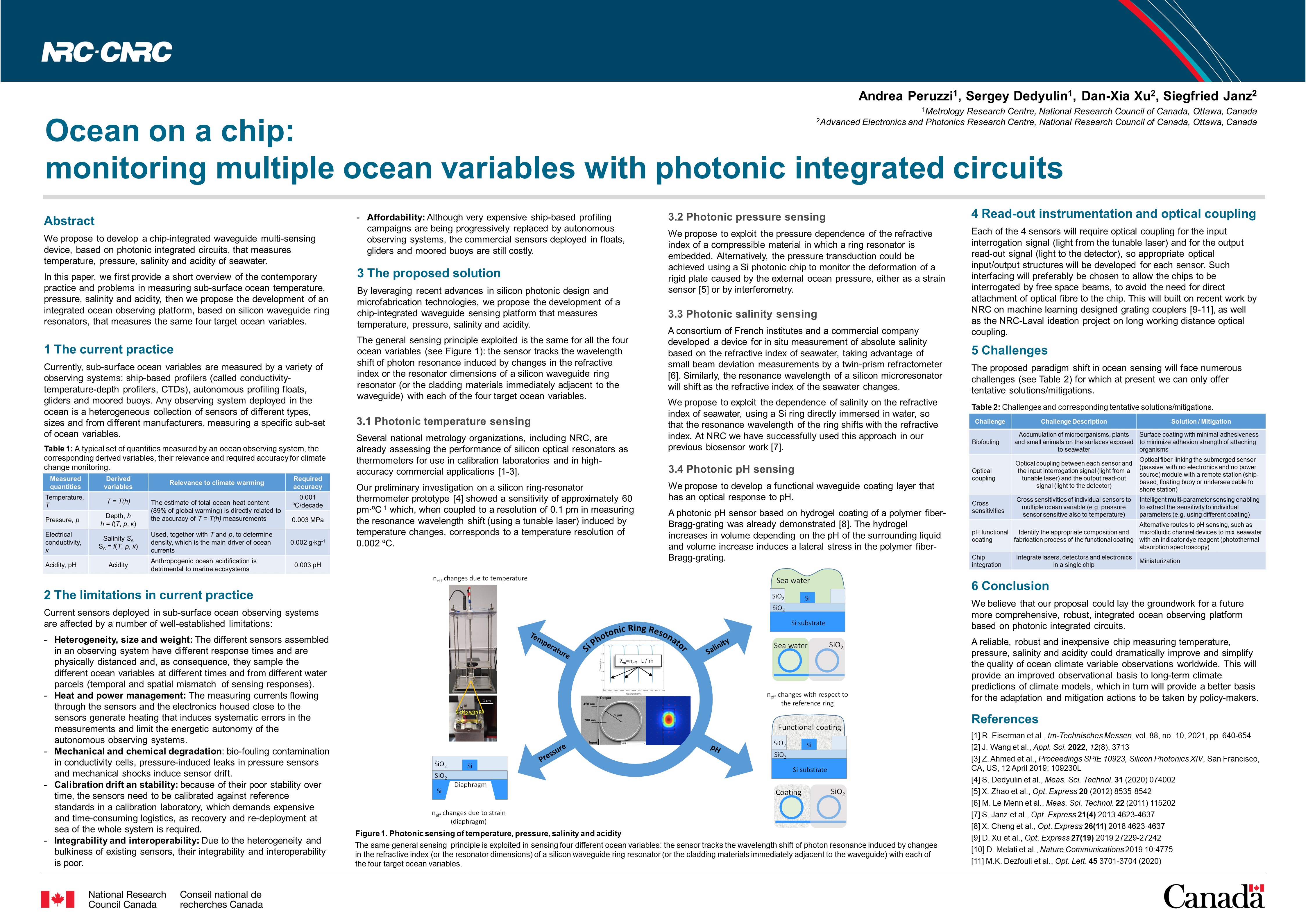
Sub-surface ocean variables (temperature, pressure, salinity, acidity, …) are measured by a variety of observing systems deployed in the ocean: ship-based profilers (CTDs), autonomous profiling floats, gliders and moored buoys. Any ocean observing system is a heterogeneous collection of sensors of different types, sizes and from different manufacturers, measuring a specific sub-set of ocean variables. Current sensors deployed in sub-surface ocean observing systems are affected by a number of well-established limitations: - Heterogeneity, size and weight: The different sensors assembled in an observing system have different response times and are physically distanced, and, as a consequence, they sample the different ocean variables at different times and from different water parcels. - Heat and power management: The sensing currents and the electronics housed close to the sensors generate heating that induces systematic errors in the measurements and limit the energetic autonomy of the observing systems. - Mechanical and chemical degradation: pressure-induced leaks in pressure sensors, mechanical shocks in temperature sensors, and bio-fouling contamination in conductivity cells induce sensor drift. - Calibration drift and stability: due to poor time stability, the sensors need to be calibrated against reference standards in a calibration laboratory, which demands expensive and time-consuming logistics in the recovery and re-deployment at sea of the whole system. - Accuracy: Many manufacturers’ specifications are often overly-optimistic and do not consider systematic errors affecting the sensors. - Integrability/interoperability: Due to the heterogeneity and bulkiness of existing sensors, their integrability and interoperability is poor. - Affordability: Although very expensive ship-based profiling campaigns are being progressively replaced by autonomous observing systems (floats, gliders and moored buoys), the commercial sensors deployed in floats, gliders and moored buoys are still costly. To overcome all these drawbacks, we propose a paradigm shift in ocean sensing technologies: by leveraging recent advances in silicon photonic design and microfabrication technologies, we propose to develop a chip-integrated waveguide sensing platform that allows simultaneous photonic sensing of four major ocean variables: temperature, pressure, salinity and acidity. Photonic Integrated Circuit (PIC) sensors will exploit photonic sensing principles that have already been demonstrated: the temperature dependence of the silicon refractive index in photonic temperature sensors, the mechanical strain dependence of the refractive index in photonic pressure sensors, the salinity dependence on refractive index in salinity sensors, and the pH dependence of a functional coating in photonic acidity sensors. The level of maturity of photonic sensing technology ranges from nearly mature for temperature to completely new for acidity. As consequence, the required research efforts will depend on the selected ocean variable. The advantages offered by photonic-on-chip sensing are multiple: homogeneity and miniaturization will overcome the deleterious mismatch in time and space response of traditional sensors, easy integration to sensor networks by exploiting existing telecom devices will offer the possibility to add to the same platform sensing of other ocean variable (for example, dissolved oxygen, dissolved carbon, Chlorophyll a fluorescence), and the self-calibrating nature of some of the photonic sensing methods will avoid the need of expensive and time consuming periodic recalibrations.
Topic : Theme 1: Oceans and Hydrology.
Reference : T1-B13
Back to the list of submissions
Previous submission
·
Next submission
Comments are only accessible to participants. If you are a participant, please log in to see them.